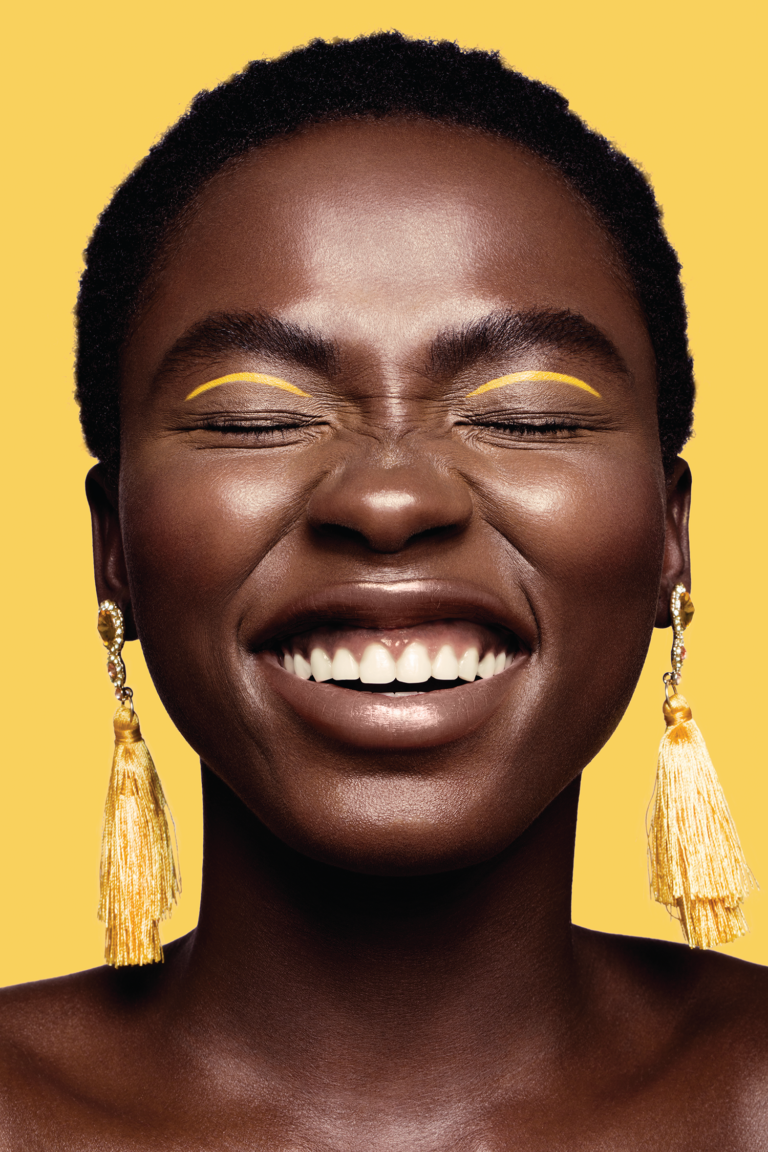
In 2016, hygge was marketed as the secret to happy living. The Danish word essentially signifies the feeling of cosiness and contentment found through enjoying the simple things in life, so it’s usually referenced alongside candles, comfort food, and sweatpants. “If you don’t feel hygge, you probably aren’t using the word right,” explains the website Hygge House. But unfortunately, despite many self-help books trying to tell us otherwise, spending more time reading in a cosy nook won’t single-handedly cure the global mental health crisis.
Four years on from the world’s introduction to hygge, sweatpants are no longer being worn to encompass the Danish way of life. Rather, they’ve become the unofficial uniform of the Covid-19 pandemic as we battle burnout, fear, anxiety, and languishing—a viral new term to describe the ‘blah’ feeling that sits directly in the middle of depression and flourishing. Or as New York Times journalist Adam Grant puts it, “You’re not functioning at full capacity. Languishing dulls your motivation, disrupts your ability to focus, and triples the odds that you’ll cut back on work.”
Since the first lockdowns began, the rise in people using mindfulness and therapy apps has jumped substantially. Calm, Headspace and Smiling Mind have been there for those who need a quick breathwork meditation while online therapists at Talkspace and BetterHelp can be matched with new patients and text advice straight to their phones.
The lasting mental effects the pandemic has had on society are yet to be determined, but given the amount of fear, uncertainty, and loss people have felt on a global scale, many experts are expecting a rise in those suffering from post-traumatic stress disorder (PTSD), or ‘post-pandemic trauma’ as it’s dubbed online. But even before the pandemic hit, experts had been reporting rising rates of depression and anxiety for decades.
From 2005 to 2015, the World Health Organisation reported that cases of depressive illness increased by nearly a fifth, and, by the middle of 2020, one in five people in the UK were suffering from depression. As for New Zealand? Aotearoa has the highest rate of youth suicide in the developed world. In 2019, the same year Prime Minister Jacinda Ardern unveiled the “world-first” well-being budget, the numbers reached an all-time high. Nearly half the population will meet the criteria for a mental illness diagnosis at some stage in their lives, and close to one in three Māori and one in four Pacific people—compared to one in five for the total population—will experience depression in any given year.
The reasons for the escalating global mental health crisis are numerous and relatively easy to pinpoint on a larger scale: climate change, the stresses of recent political and social events, the fast-paced capitalist way society is set up, and how the increasingly digital world is impacting us all. But when it’s an average Tuesday and you’re not consciously aware that you’ve swiped past two friends who’ve bought a house, one who’s engaged, and one who just got a promotion interspersed with infographics about murder and sexual assault before you’ve even gotten out of bed, it can be hard to figure out why you suddenly feel like crying in the shower. It’s also no coincidence that since the advent of smartphones rates of depression and anxiety in young people have risen dramatically, described as both an epidemic and an “escalating crisis.” One paper on social comparison goes as far as to say avoiding social media alone could make us twice as happy as scoring a high-income job.
After years of feeling relatively ‘normal’ by mental health standards, I started suffering from anxiety when I was 24. Despite being fairly minor at first, flaring up mostly in social situations, as the years passed my condition continued getting progressively worse. In lieu of medication, I had taken to sleeping under a weighted blanket (the 4kgs plus of pressure on top of your body supposedly calms your autonomic nervous system) and to popping Rescue Remedy pastilles like they were going out of fashion.
One night, when trying to get into a bar in New York, the bouncer stopped me, thinking I was attempting to smuggle in drugs in a little yellow jar. But after five minutes of explaining what the natural stress reliever did to calm my racing heart, he was taking a photo to send to his similarly anxious girlfriend.
It wasn’t until my symptoms were physical, including severe panic attacks, vomiting, and at one point, a left eye threatening to go blind, that it became harder to ignore, so I finally booked an appointment to see a psychologist.
Over the next 18 months, she almost single-handedly, alongside a few of my closest friends, saved my life. Through my weekly sessions, which were in person then turned to Zoom when the pandemic hit, I was diagnosed with PTSD and depression—alongside my very obvious anxiety. I learned that the body keeps the score—trauma and its resulting stress harm us through physiological changes to our body and brain, and those harms can persist throughout life—and there is now very likely a chemical imbalance in my brain I will have to manage forever. Despite desperately wanting to feel better, healing is lifelong work.
When you’re a generation born in the era of Uber and Netflix, it’s hard to stomach being told you’ll have to work consistently for life in order to feel well. But it turns out, a lot of us are ready and willing to learn how to do so.
The most popular course in the history of Yale University, which spans more than three centuries, is not political science, engineering, or mathematics—all majors the Ivy League school specialises in. Rather, it’s a course promising to teach students how to be happier. In the spring of 2018, Psychology and the Good Life opened for enrolment, but even its mastermind, Professor Laurie Santos, couldn’t predict the demand. As word spread across campus, class numbers steadily increased, until, in less than a week, one in four Yale undergraduates were enrolled.
Now available online as ‘The Science of Well-Being’, Santos has virtually taught more than 3.4 million people—2.9 million of whom signed up during or after March 2020, the month Covid-19 was officially declared a pandemic. This makes sense: over the past 16 months, we’ve been given clear instructions for protecting our physical health: wear masks, social distance, get vaccinated. But less clear has been the manual for protecting our mental health. After first hearing about Santos’ course three years ago, all it took was for a gruelling four-month winter lockdown in London, and the hope of being able to share my wisdom in this article, for me to finally sign up.

Can money buy happiness?
When you think of what would make you happier, getting a pay rise, buying a house, or finally leaving the job or relationship you hate are likely to be some of the solutions that pop to mind. These all fall under the umbrella of circumstances. But, according to Sonja Lyubomirsky, a professor of psychology at the University of California whom Santos references in her second lecture, circumstances don’t have much of a correlation to our overall happiness levels.
Lyubomirsky proposes that only roughly 10 per cent of happiness is determined by circumstances, which are somewhat in our control; 50 per cent of happiness is determined by our genes, which is completely out of our control; and the remaining 40 per cent is determined by our thoughts, actions, and attitudes, which are completely in our control. Lyubomirsky does note that if you are living in extreme circumstances, such as with a constant threat of violence or in poverty, circumstances will, in this case, take up a much larger piece of the pie.
Santos says the notion that we need to change our circumstances to find happiness is one of the biggest misconceptions there is. “The research shows that unless you’re experiencing really traumatic circumstances, usually changing what’s going on in your life isn’t the kind of thing that improves happiness,” she tells me over a voice note. “Generally speaking, happiness comes more from our behaviours and our mindsets.”
Lyubomirsky also found that although research connects people in richer countries as being happier, actually, the more money you have, the less happiness you get from it. This relationship between happiness and wealth was first observed by professor of economics Richard Easterlin in 1974, who found there is a positive correlation between the two, but only until a certain point. As we become rich enough to support our basic needs, the average wealth in society becomes less and less important to our happiness.
This doesn’t necessarily mean that there is no set monetary amount that equals happiness. Nobel prize-winning economists Daniel Kahneman and Angus Deaton studied 1000 American households and found that well-being rises with income until you hit $75,000, at which point it levels off. Beyond that, there’s no observable increase in happiness with higher income.
As for that rush you get when you buy something new, for example, a celebratory post-lockdown dress? Santos calls this hedonic adaptation, which means that after an initial rush of joy, we quickly get used to our new situation—finances, job, dress—and end up wanting more, and more, in order to feel that high again. This also includes our notion of ‘happily ever after’. Most couples become more satisfied in the first two years of marriage, but after that their happiness returns to the same base level as before.
How to be happy
With thousands of books published on the subject, university courses dedicated to it, and millions on a quest towards it every day, surely there’s a hack to help us find happiness? The good news is that there is—to an extent.
Incorporating mindfulness, fostering connection with others and creating community are all ways to improve our happiness, so too is investing in experiences over new items and practising gratitude. After Santos instructed her students to try to carve out a moment to be thankful each day, I (very sceptically) bought a gratitude journal, with sections in which to list three things that made the day great and three things you’re thankful for, each morning and night. According to my lecture notes, this can increase long-term well-being by more than 10 per cent (so far, it seems to have worked). Santos says it pays to note that it is impossible to “fix” our brains and eliminate the glitches that exist. Our brains are hardwired in certain ways we can’t change. But if we understand how our minds do what they do, we can develop ways to work around them.
Meik Wiking understands happiness better than almost anyone. Wiking is founder and CEO of the world’s only Happiness Research Institute, which is based in Copenhagen, the capital city of the country that birthed hygge. He has travelled the world interviewing its happiest people to discover the key components of happiness, and he tells me, “We all seem to be looking for happiness, but perhaps we are looking in the wrong places. As societies, we have gotten richer but often failed to become happier.” Along with Lyubomirsky and Santos, Wiking mentions the misconception that more money equals more happiness. “South Korea, for instance, has experienced tremendous growth and wealth but they are still really struggling to convert that into quality of life,” he explains.
To feel happier, Wiking says we need to focus on things mediated by the drivers of happiness, which he cites as: social relations, economic wealth, physical and mental health, freedom, trust and kindness. “One impactful thing could be, for example, to go on walks with one of your best friends or a family member,” he says. “In this way, you would both be active—good for health—as well as social—good for social relations.”
Are we the problem?
Recently, I had somewhat of a revelation while reading a book of essays by the late British author Mark Fisher, who suffered from, and often wrote about, severe depression—an illness which would ultimately result in his death in 2017. After all our time and money spent on journals and apps, what if it’s not us that’s the problem, but rather the way society is set up and our constant pursuit of happiness that is?
In an essay titled The Privatisation of Stress, Fisher writes that the way we’re taught to view mental health is that it’s an individual problem, not a societal one, despite mental health being one of the most prevalent and deadly illnesses plaguing society. The result is that we are left to think of ourselves as the problem, and we’re the ones left to try to locate the cause and attempt to fix it. Very rarely are we taught to question the world we live in and the changes that can be made at a government and legislative level to create a happier society.
“The social and political causation of distress is neatly sidestepped at the same time as discontent is individualised and interiorised,” Fisher writes. But when you think back to all of the earlier contributing factors to our declining mental health that I listed: climate change; political climate; how capitalism makes us feel that our worth is tied to success and money; technology; poverty, job dissatisfaction; and a lack of community, you start to see how a lot could be changed with serious government intervention.
When I bring this up with Santos, she agrees. “In the class, we talk about a lot of things you can do at the individual level to promote your well-being. Things like taking time to be more social, taking time off work, taking time for gratitude, exercising, sleeping more,” she says. “These are all things we can try to do at the individual level. But it would be great if societies were set up to help us.”
There’s proof this theory works, too. Consistently Finland, Iceland and Denmark top the list as the happiest countries in the world, but that’s not because people who live there are genetically more happy, it’s because their society structures things in a way that allows its people to incorporate more of the essential components of happiness.
“Scandinavians might be freer to pursue the simple pleasures in life because many Nordic countries ensure that the basic needs of their citizens are met, providing things like free university education, social security, universal health care, and paid family leave,” Wiking explains.
It would be wrong not to leave this piece on a happy note. While looking through my gratitude journal, I found a quote by Meik Wiking I’d jotted down during my final lecture with Santos. “People on a quest for something they find meaningful…tend to be happier; they know that happiness is the by-product of the process and not a pot of gold at the finish line.”
Perhaps we need to consider how to turn the idea of the pursuit of happiness into the happiness of the pursuit.










